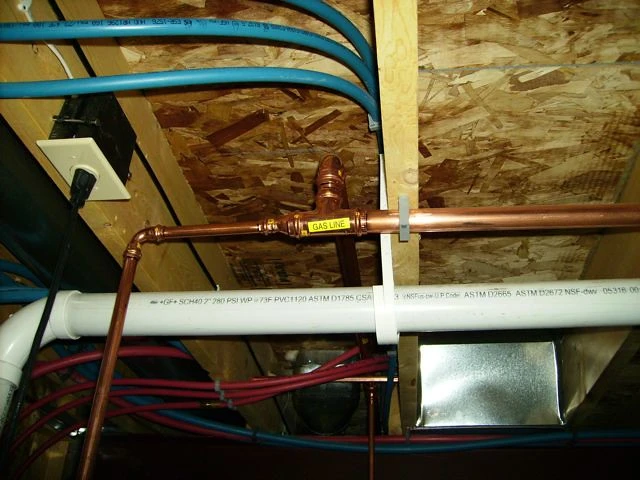Copper is a versatile metal known for its conductivity, corrosion resistance, and durability, making it a popular choice for various plumbing, electrical wiring, and construction applications. However, when it comes to gas lines, there are considerations and factors to weigh before using copper piping. In this article, we’ll explore the use of copper for gas lines, examining its safety, compatibility, and best practices for installation.
Safety Considerations:

- Corrosion Resistance: Copper is generally resistant to corrosion, which is advantageous for gas lines as it helps prevent degradation and leaks over time. However, exposure to certain chemicals or environments can cause corrosion in copper piping, compromising its integrity and safety.
- Compatibility with Gas: Copper is compatible with natural gas and propane, the two most common types of household gases used for heating, cooking, and other applications. Copper gas lines can effectively transport these gases without adverse effects when properly installed and maintained.
- Soldering and Brazing: Joining copper pipes for gas lines typically involves soldering or brazing, which requires heating the pipes to high temperatures to melt the solder or brazing material. It’s essential to follow proper procedures and safety protocols during soldering or brazing to prevent accidents and ensure the integrity of the joints.
- Ventilation and Inspection: Adequate ventilation is crucial when working with gas lines, as it helps dissipate fumes or gases that may accumulate during installation or repairs. Additionally, regular inspection and maintenance of gas lines are necessary to detect potential issues, such as leaks, corrosion, or damage, that could compromise safety.
Durability and Longevity:
- Resistance to Corrosion: Copper’s natural resistance to corrosion helps prolong the lifespan of gas lines, reducing the likelihood of leaks or failures due to degradation over time. Properly installed and maintained copper piping can last for decades without significant deterioration.
- High-Temperature Tolerance: Copper can withstand high temperatures, making it suitable for use in gas lines where temperatures may fluctuate due to the flow of hot gases. This high-temperature tolerance contributes to copper gas lines’ overall durability and reliability.
- Mechanical Strength: Copper piping exhibits excellent mechanical strength and flexibility, allowing it to withstand external forces and pressure variations commonly encountered in gas line systems. This inherent strength helps prevent damage or failure of the piping under normal operating conditions.
- Low Maintenance Requirements: Copper gas lines require minimal maintenance compared to other materials, reducing the need for frequent inspections or repairs. Routine checks for leaks, corrosion, or damage are recommended to ensure continued performance and safety, but copper piping generally maintains its integrity with minimal upkeep.
Installation Best Practices:
- Size and Capacity: Selecting the appropriate size and capacity of copper piping is essential to accommodate the gas system’s flow rate and pressure requirements. Oversized or undersized piping can lead to inefficient operation or safety hazards.
- Avoiding Abrasion: Copper piping should be installed carefully to prevent abrasion or damage from contact with sharp objects, rough surfaces, or other materials. Protective measures such as insulation or cushioning may be necessary to avoid wear and tear on the piping.
- Proper Support and Fastening: Copper gas lines should be adequately supported and fastened to prevent sagging, shifting, or movement that could compromise the system’s integrity. Secure mounting and appropriate spacing between supports help maintain stability and avoid stress on the piping.
- Leak Testing: After installation, thorough leak testing should be conducted to verify the integrity of the gas line system and ensure no leaks or defects. Leak testing methods may include pressure testing, soap bubble testing, or electronic detection techniques to identify any areas of concern.




